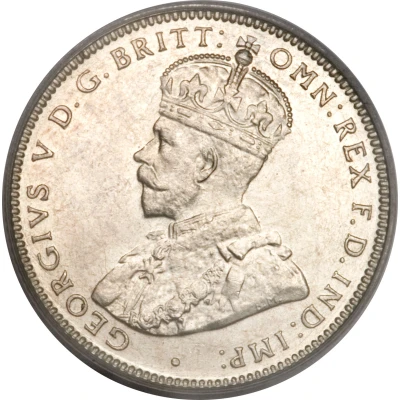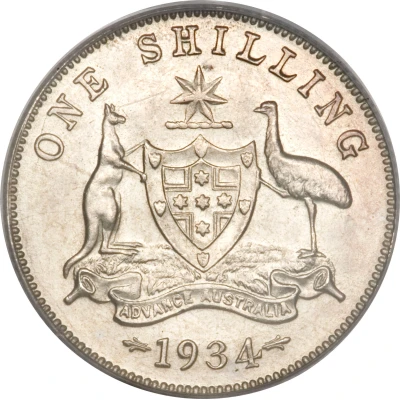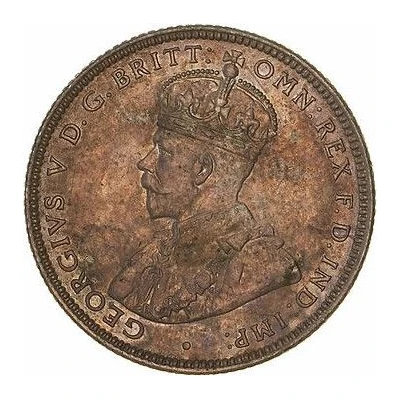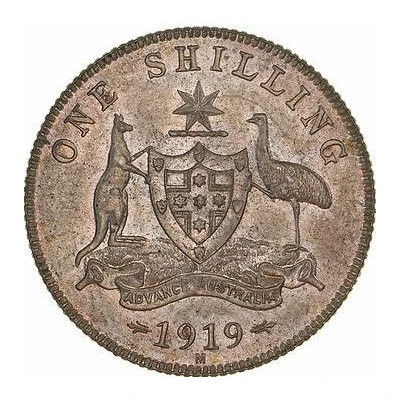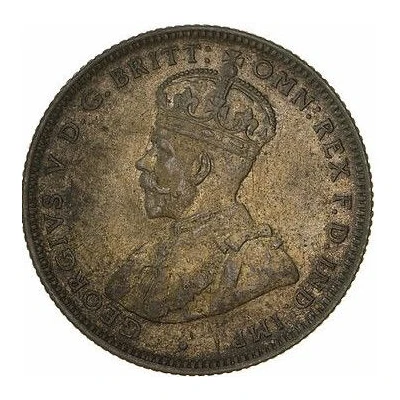
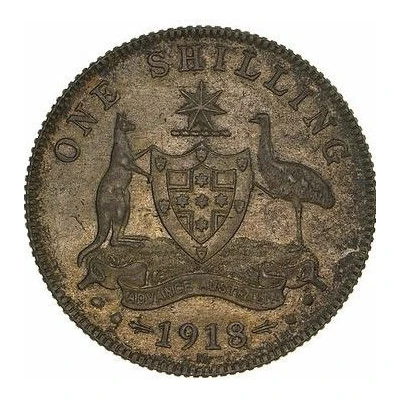

1 Shilling - George V Half Silver Pattern
1918 year| Silver (.500) | 5.65 g | 23.5 mm |
| Issuer | Australia |
|---|---|
| King | George V (1910-1936) |
| Type | Pattern |
| Year | 1918 |
| Value | 1 Shilling (1⁄20) |
| Currency | Pound (1788-1966) |
| Composition | Silver (.500) |
| Weight | 5.65 g |
| Diameter | 23.5 mm |
| Thickness | 1.36 mm |
| Shape | Round |
| Technique | Milled |
| Orientation | Medal alignment ↑↑ |
| Updated | 2024-10-04 |
| Numista | N#427090 |
|---|---|
| Rarity index | 100% |
Reverse
Coat of Arms with supporters (a Kangaroo and Emu) with a banner below reading motto (Advance Australia). Lettering around of denomination and Mint mark below, date with dashes.
Script: Latin
Lettering:
ONE SHILLING
ADVANCE AUSTRALIA
-1918-
M
Engraver: William Henry James Blakemore
Edge
Reeded
Comment
Two examples of this pattern are known. The first is the only one in private hands, with it first being recorded in the collection of Mr A M Le Souef, a former Deputy Master of the Melbourne branch of the Royal Mint London. The second was discovered later in 1991 and is in the possession of the Victoria Museums Collections (the coin in the picture is that coin). As part of the debasements following the Great War across the British Empire in response to economic strain, debt and the rising price of silver which led to governments removing some silver from coinage. In the UK, in 1920, the silver content was lowered to 50%, in Canada, 80%, British West Africa to 50% and then to non silver, East Africa to 50% then 25%, Ceylon to 55% and the Straits Settlements to 40% . Australia was debating the reduction of silver content from 1918 on, and had new dies prepared to test coins when the decision was made. The dies for this pattern strike had two irregular spots on the observe to distinguish them from the good silver purity issues. The first test strikes were in 1918, of half silver purity and two are known as previously mentioned, with 1919 strikes in 625 fine silver instead of 500 fine silver and with two distinctive ‘S’ placed as a mark. These are some of the rarest Australian Coins. 1920 strikes were also made in reduced silver - presumably 50% - and a few of all types are in private hands. Eventually, the price of silver stabilized, and the striking of coinage continued in good silver, with the proposed alloys never seeing circulation use until the issue of half silver coins in 1946 following the Second World War.
Interesting fact
One interesting fact about the Pattern 1 Shilling - George V (Half Silver Pattern) 1918 from Australia is that it was minted in a very small quantity, with only 500 coins produced, making it a rare and highly sought-after collector's item.
